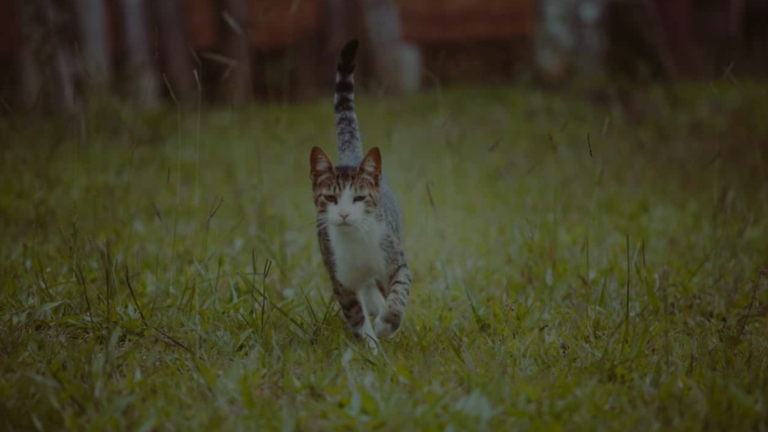Cats are cherished members of many households, providing companionship, affection, and joy to their owners. However, there may come a time when we face the unfortunate reality of dealing with the loss of our feline friends. In such moments, it can be essential to understand how to tell how long a cat has been dead. This guide will walk you through the process step by step, ensuring you can handle the situation with care and compassion.

Why It Matters
Losing a beloved pet is a challenging experience, but knowing how long your cat has been deceased can be crucial for various reasons. It can help you:
Make Informed Decisions
Understanding the timeline of your cat’s passing can assist you in making decisions about burial, cremation, or any other arrangements you may need to make.

Find Closure
Knowing how long your cat has been deceased can offer a sense of closure, allowing you to begin the grieving process.
Ensure Proper Handling
Different stages of decomposition require different handling methods. Knowing the timeline can help ensure that your cat is treated with respect and care.

How to Tell How Long a Cat Has Been Dead
To determine how long a cat has been dead, you need to look for specific signs of decomposition. These signs can vary depending on various factors, including temperature and environmental conditions. Here are the key stages of decomposition:
Fresh Stage
- Appearance: In the first hours to a few days after death, the cat’s body appears mostly unchanged.
- Temperature: The body temperature is close to the ambient temperature.
- Rigor Mortis: Muscles are still flexible.
- Eyes: Eyes are clear.
Bloat Stage
- Appearance: After a couple of days, the body starts to bloat due to gas accumulation.
- Temperature: Remains close to the ambient temperature.
- Rigor Mortis: Begins to fade.
- Eyes: May become cloudy.
Active Decay Stage
- Appearance: This stage occurs several days to a week after death and is marked by a strong odor and significant changes in appearance.
- Temperature: The body’s temperature begins to rise.
- Rigor Mortis: Completely gone.
- Eyes: Often sunken and discolored.
Advanced Decay Stage
- Appearance: After a week or more, the body continues to break down, with a noticeable loss of tissue.
- Temperature: The body temperature rises significantly.
- Rigor Mortis: Absent.
- Eyes: May be absent due to decomposition.
Dry Remains Stage
- Appearance: At this point, all soft tissues have decomposed, leaving behind dry, brittle remains.
- Temperature: Returns to ambient temperature.
- Rigor Mortis: Absent.
- Eyes: Absent.
Determining the Time of Death
To estimate your cat’s time of death, you can consider the symptoms described above, but remember that many variables can affect the rate of decomposition. Factors such as temperature, humidity, and cat size can all play a role. Therefore, it is important to consult a veterinarian or a forensic science professional if you need accurate information.

Conclusion
Losing a beloved cat is never easy, but understanding how long a cat has been dead can provide valuable closure and help you make informed decisions. Remember that this process is sensitive, and it’s always a good idea to seek professional guidance if you’re unsure.
Resources & References
For more information on pet care and related topics, consider exploring the following resources:
Recommended Articles
Suggested Video
We recommend watching this informative video titled “How to Know if Your Cat Is Dying | Signs and Things to Do” to gain further insights into cat health and well-being. This video can help you better understand your cat’s needs and recognize signs of distress.
In this comprehensive guide, we’ve discussed how to tell how long a cat has been dead, emphasizing the importance of understanding the signs of decomposition. We hope this information helps you navigate this challenging situation with sensitivity and care.
FAQs – How Long a Cat Has Been Dead
How long has a cat been dead if it’s stiff?
A cat can become stiff within 1-2 hours of death.
What happens to a cat’s body after it dies?
The body will begin to cool and rigor mortis will set in.
How long does it take for a dead cat to stop smelling?
It can take several days for a dead cat to stop smelling.
What happens right before a cat dies?
The cat may become lethargic, lose appetite, and have difficulty breathing.
How do you tell how long an animal has been dead?
You can check the body temperature, the stiffness of the body, and the presence of rigor mortis.
What does it mean when a cat dies with its eyes open?
This can be normal, but it can also be a sign of an underlying condition.
How deep should you bury a cat?
You should bury a cat at least 2 feet deep.
What are the stages of decomposition in cats?
The first stage is autolysis, which is the breakdown of the body’s cells. The second stage is putrefaction, which is the breakdown of the body by bacteria. The third stage is liquefaction, which is when the body begins to liquefy. The fourth stage is dry decay, which is when the body dries out and mummifies.







